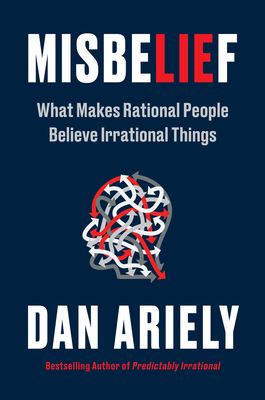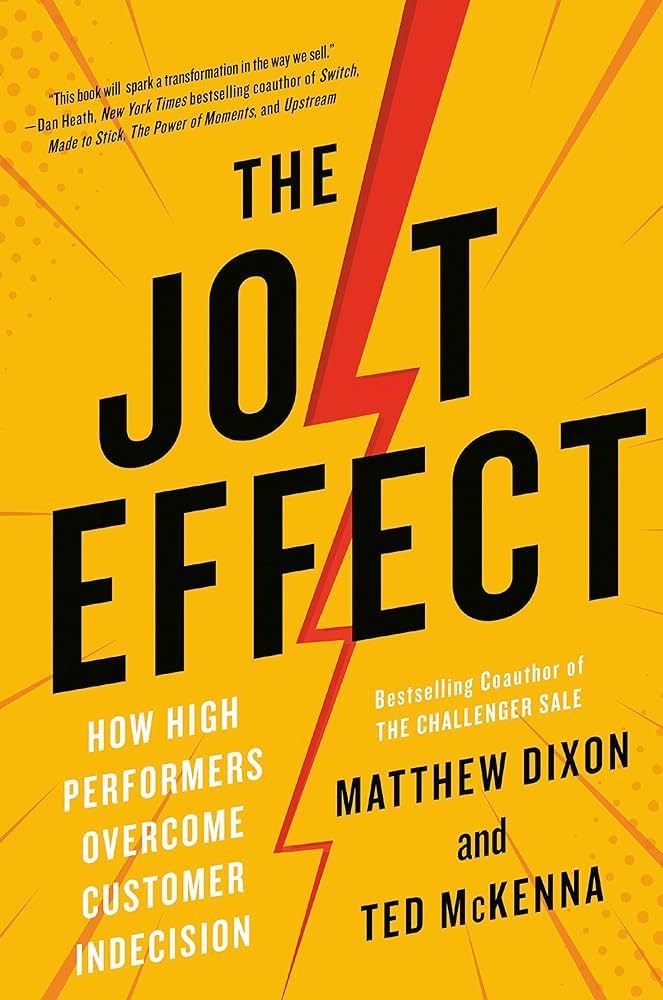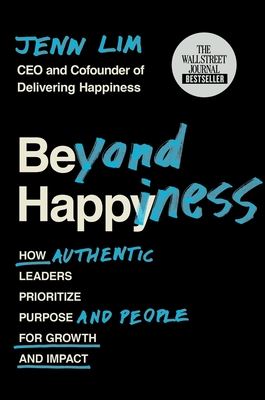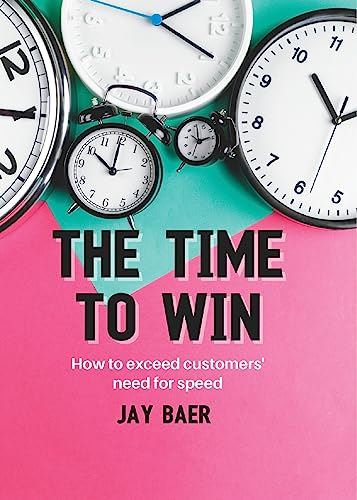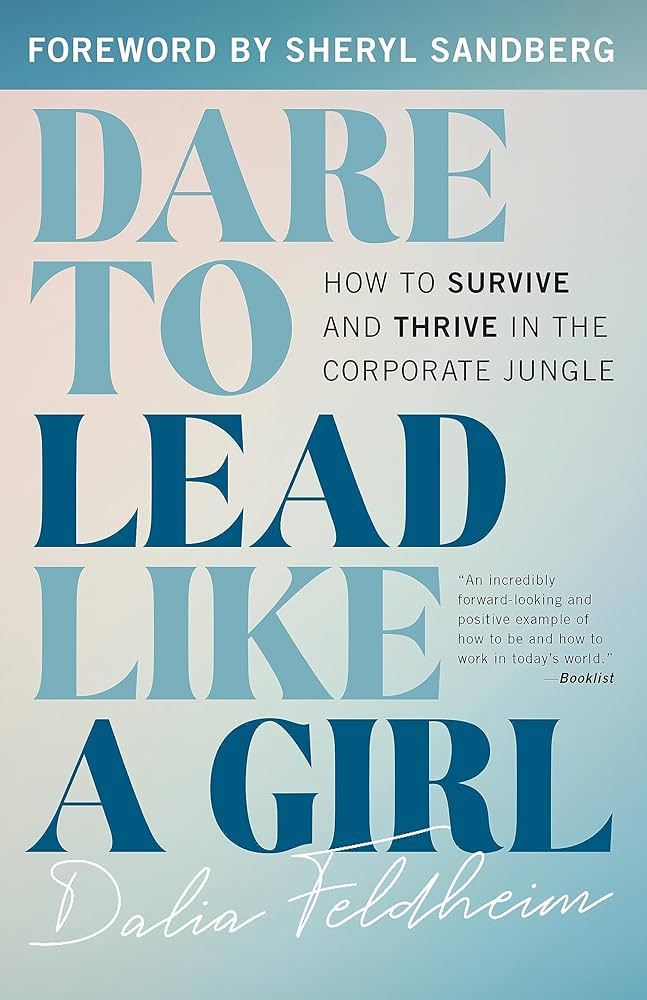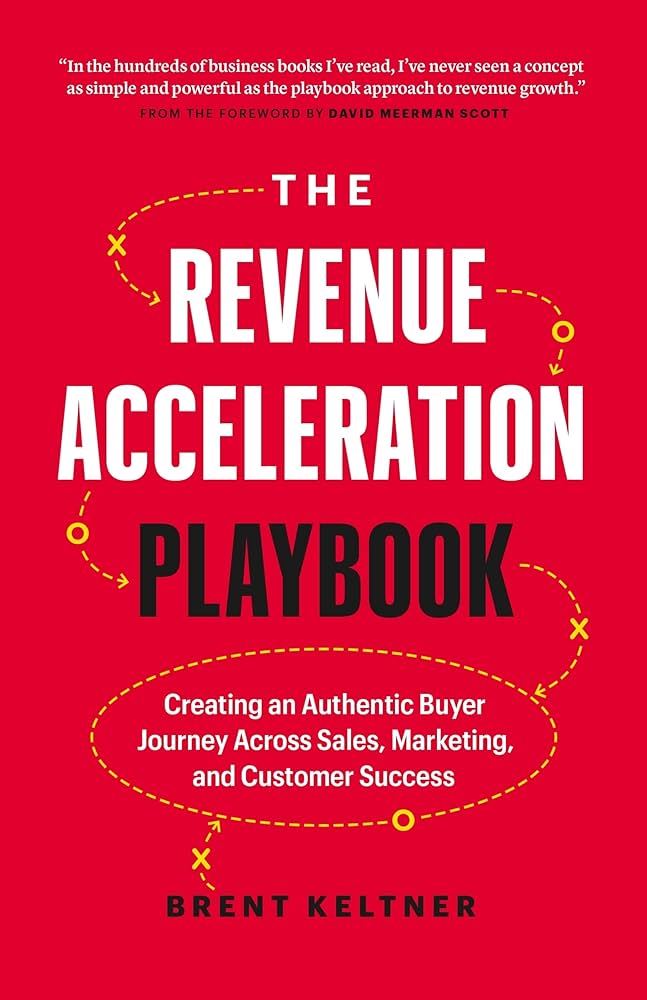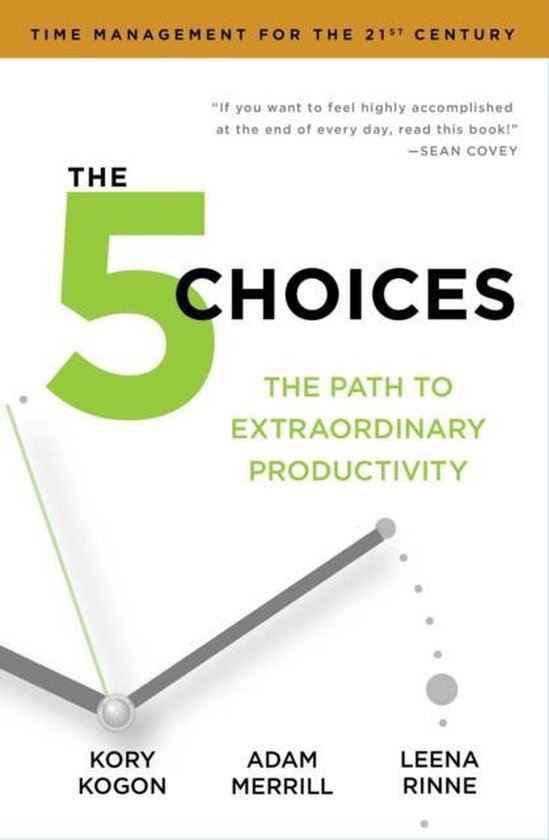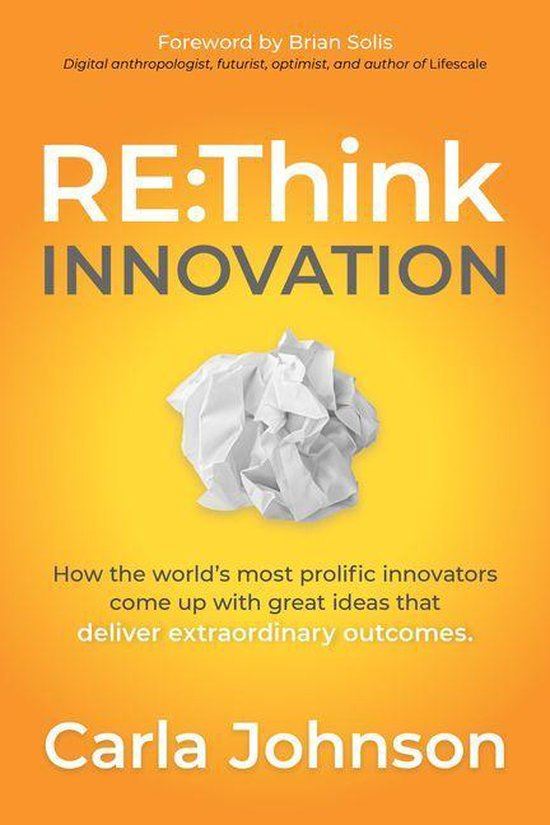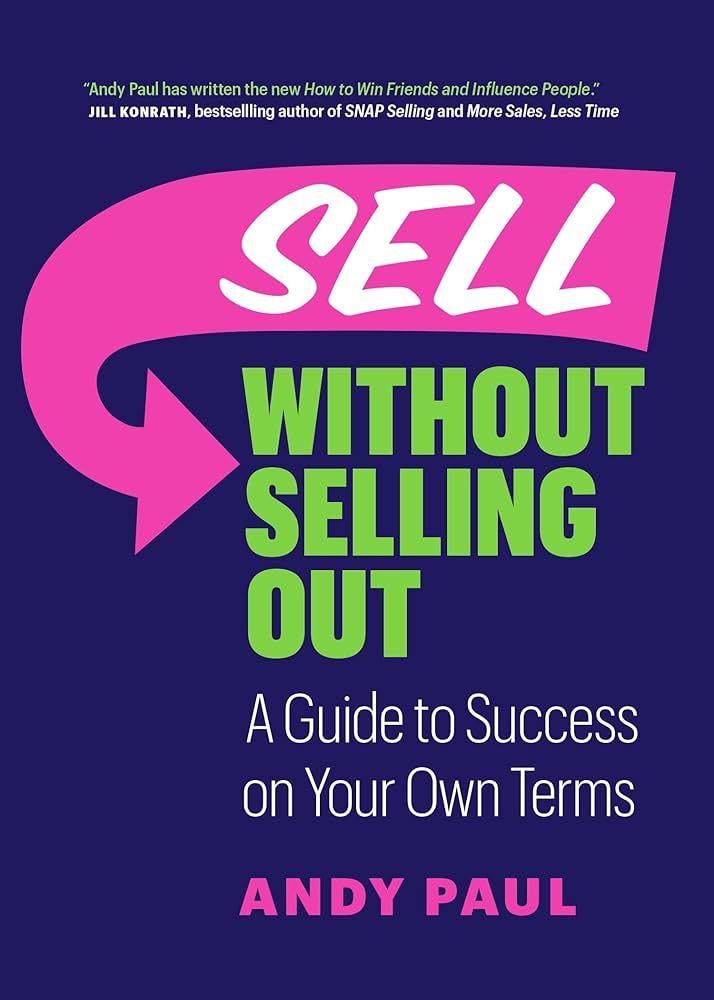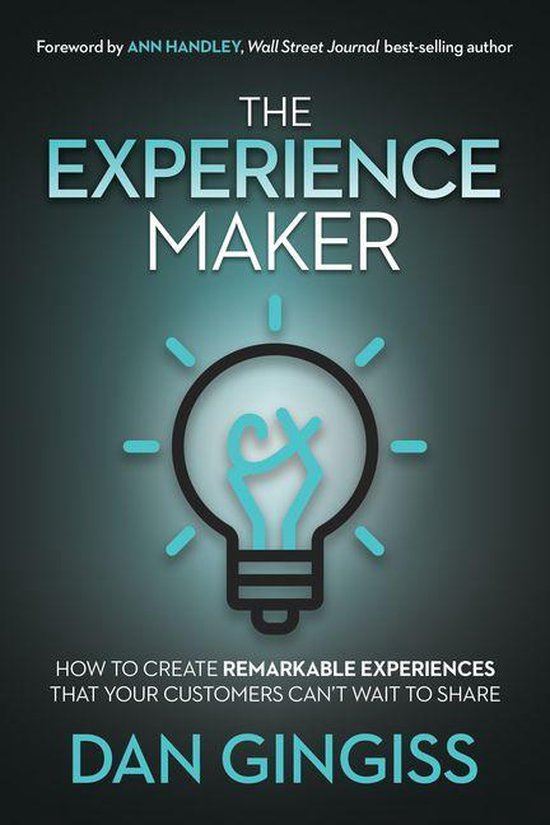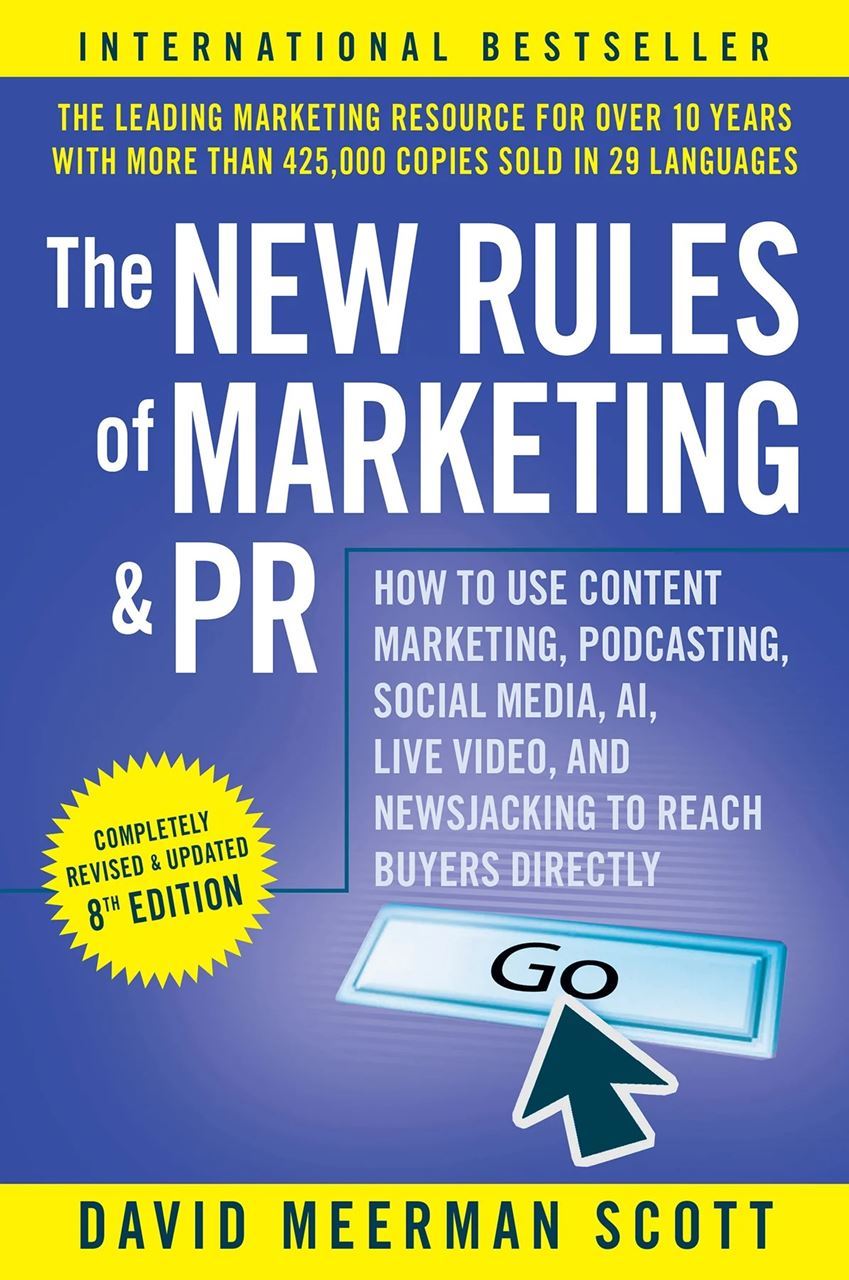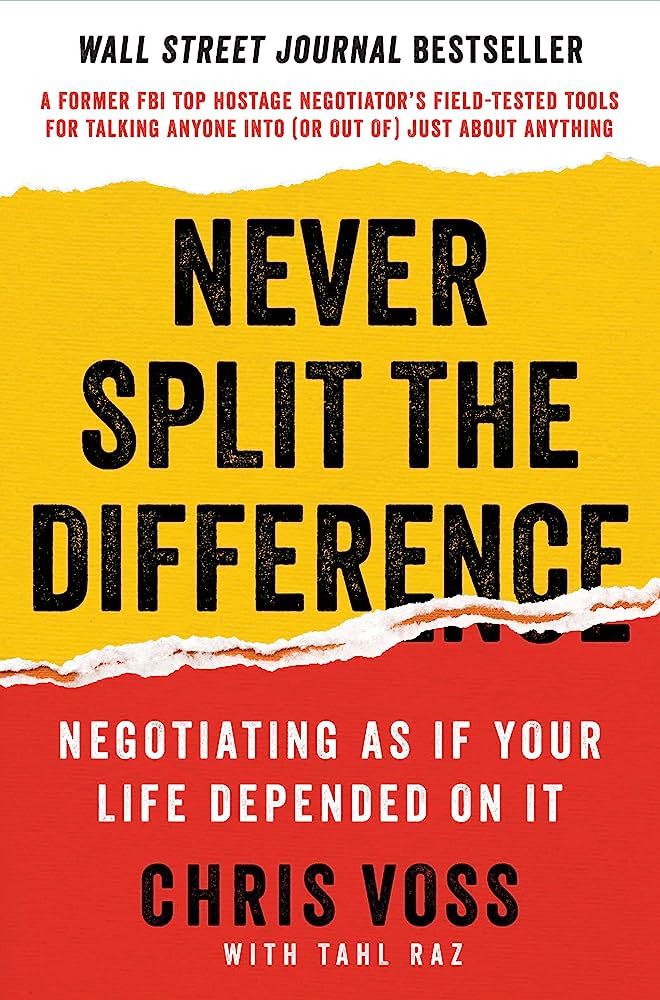CMO Huddles Book Club
Keep up with all the B2B greatness by some of the best business book authors in the biz. All authors have been or will be featured in Career Huddles, available to select membership tiers.
Table of Contents
- Misbelief by Dan Ariely
- The JOLT Effect by Matt Dixon
- The New Rules of Marketing and PR by David Meerman Scott
- Smart Brevity by Roy Schwartz
- Never Split the Difference by Chris Voss
- Think Faster, Talk Smarter by Matt Abrahams
- Impact Players by Liz Wiseman
- Beyond Happiness by Jenn Lim
- Silver Goldfish by Stan Phelps
- The Time to Win by Jay Baer
- Radical Candor by Kim Scott
- Dare to Lead Like a Girl by Dalia Feldheim
- The Revenue Acceleration Playbook by Brent Keltner
- Bulletproof Your Career by Pat Romboletti
- Forging An Ironclad Brand by Lindsay Pedersen
- The Challenger Customer by Brent Adamson
- The 5 Choices by Kory Kogon
- MOVE by Sangram Vajre
- RE:Think Innovation by Carla Johnson
- Sell Without Selling Out by Andy Paul
- The Experience Maker by Dan Gingiss
| Misbelief by Dan ArielyWhat Makes Rational People Believe Irrational Things
|
Description
The renowned social scientist, professor, and bestselling author of Predictably Irrational delivers his most urgent and compelling book—an eye-opening exploration of the human side of the misinformation crisis—examining what drives otherwise rational people to adopt deeply irrational beliefs.
Misinformation affects all of us on a daily basis—from social media to larger political challenges, from casual conversations in supermarkets, to even our closest relationships. While we recognize the dangers that misinformation poses, the problem is complex—far beyond what policing social media alone can achieve—and too often our limited solutions are shaped by partisan politics and individual interpretations of truth.
In Misbelief, preeminent social scientist Dan Ariely argues that to understand the irrational appeal of misinformation, we must first understand the behavior of “misbelief”—the psychological and social journey that leads people to mistrust accepted truths, entertain alternative facts, and even embrace full-blown conspiracy theories. Misinformation, it turns out, appeals to something innate in all of us—on the right and the left—and it is only by understanding this psychology that we can blunt its effects. Grounded in years of study as well as Ariely’s own experience as a target of disinformation, Misbelief is an eye-opening and comprehensive analysis of the psychological drivers that cause otherwise rational people to adopt deeply irrational beliefs. Utilizing the latest research, Ariely reveals the key elements—emotional, cognitive, personality, and social—that drive people down the funnel of false information and mistrust, showing how under the right circumstances, anyone can become a misbeliever.
Huddle Takeaways
This Huddle hasn’t happened yet—it's slated for August 21, 2024. Additional info TBA.
Career Huddles are available to: Huddles Leaders, Huddles Insiders, and Full Transition Team members. If you’re not in any of these levels but would like to attend, please email support@cmohuddles.com to see if you qualify for a guest pass.
|
Description
In sales, the worst thing you can hear from a customer isn’t “no.” It’s “I need to think about it.” When this happens, deeply entrenched business advice says to double down on your efforts to sell a buyer on all the ways they might win by choosing you and your business. But this approach backfires dramatically. Why? Because it completely gets wrong the primary driver behind purchasing decision-making: once purchase intent is established, customers no longer care about succeeding. What they really care about is not failing.
For years, sales expert Matthew Dixon has been busting longstanding business myths. Now in The JOLT Effect, he and co-author Ted McKenna turn their trademark analysis and latest research to the vital and growing problem of customer indecision—and offer a shocking new approach that turns conventional wisdom on its head. Drawing on a brand-new, first-of-its-kind study of more than two and a half million sales conversations from across industries, they reveal the surprising truth that high-performing sales reps grasp and their average-performing peers don’t: only by addressing the customer’s fear of failure can you get indecisive buyers to go from verbally committing to actually pulling the trigger.
Packed with robust data, counterintuitive insights, and practical guidance, The JOLT Effect is the playbook for any salesperson or sales leader who wants to close the gap between customer intent and action—and close more sales.
Huddle Takeaways
This Huddle hasn’t happened yet—it's slated for July 2024. Additional info TBA.
Career Huddles are available to: Huddles Leaders, Huddles Insiders, and Full Transition Team members. If you’re not in any of these levels but would like to attend, please email support@cmohuddles.com to see if you qualify for a guest pass.
| The New Rules of Marketing and PR by David Meerman ScottHow to Use Content Marketing, Podcasting, Social Media, AI, Live Video, and Newsjacking to Reach Buyers Directly
|
DescriptionAs the ways we communicate continue to evolve, keeping pace with the latest trends in social media, including social audio like Clubhouse, the newest online video tools such as TikTok, and all the other high-tech influences, can seem an almost impossible task. How can you keep your product or service from getting lost in the digital clutter? The eighth edition of The New Rules of Marketing and PR provides everything you need to speak directly to your audience, make a strong personal connection, and generate attention for your business. An international bestseller with nearly half a million copies sold in twenty-nine languages, this revolutionary guide gives you a proven, step-by-step plan for leveraging the power of technology to get your message seen and heard by the right people at the right time. You will learn the latest approaches for highly effective public relations, marketing, and customer communications—all at a fraction of the cost of traditional advertising! The latest edition of The New Rules of Marketing and PR has been completely revised and updated to present the most innovative methods and cost-effective strategies. The most comprehensive update yet shows you details about the pros and cons of AI and machine learning to automate routine tasks. Your life is already AI-assisted. Your marketing should be too, but there are challenges to be aware of. The definitive guide on the future of marketing, this must-have resource will help you:
Huddle Takeaways
This Huddle hasn’t happened yet. If you would like to join on June 12th, 2024 @ 12pm EST, please register via the CMO Huddles calendar. Career Huddles are available to: Huddles Leaders, Huddles Insiders, Full Transition Team, and Preferred Partners. If you’re not in any of these levels but would like to attend, please email support@cmohuddles.com to see if you qualify for a guest pass. |
 |
Description
Brevity is confidence. Length is fear. This is the guiding principle of Smart Brevity, a communication formula built by Axios journalists to prioritize essential news and information, explain its impact and deliver it in a concise and visual format. Now, the co-founders of Axios have created an essential guide for communicating effectively and efficiently using Smart Brevity—think Strunk and White’s Elements of Style for the digital age.
In SMART BREVITY: The Power of Saying More with Less, Axios co-founders Jim VandeHei, Mike Allen, and Roy Schwartz teach readers how to say more with less in virtually any format. They also share communications lessons learned from their decades of experience in media, business and communications. Huddle Takeaways
This Huddle hasn’t happened yet. If you would like to join on May 9th, 2024 @ 12pm EST, please register via the CMO Huddles calendar. Career Huddles are available to: Huddles Leaders, Huddles Insiders, Full Transition Team, and Preferred Partners. If you’re not in any of these levels but would like to attend, please email support@cmohuddles.com to see if you qualify for a guest pass. |
| Never Split the Difference by Chris VossNegotiating As If Your Life Depended On It
|
Description
Everything we’ve previously been taught about negotiation is wrong: you are not rational; there is no such thing as "fair"; compromise is the worst thing you can do; the real art of negotiation lies in mastering the intricacies of No, not Yes. These surprising tactics—which radically diverge from conventional negotiating strategy—weren’t cooked up in a classroom, but are the field-tested tools FBI agents used to talk criminals and hostage-takers around the world into (or out of) just about any scenario you can imagine. In NEVER SPLIT THE DIFFERENCE: Negotiating As If Your Life Depended On It, former FBI lead international kidnapping negotiator Chris Voss and co-author Tahl Raz break down these strategies so that anyone can use them in the workplace, in business, or at home. Throughout the book, Voss draws on his experiences in truly life-or-death situations to illustrate these techniques and offers scores of examples of how they translate into our working lives. We spend most of our days at work negotiating for something. Knowing the most successful, crisis-tested approaches to the process will ensure the conversation more frequently goes your way. What sets these strategies apart from other negotiation paradigms—i.e., the standard thinking in negotiations is to approach them as logical and sequential problems to be solved—is the injection of emotional intelligence and empathy into the negotiation process. This was the game-changer for the FBI, Voss writes, and these are the unique skills emphasized in Never Split the Difference. Voss explains how simple these tools can be, such as your tone of voice, the types of questions you ask the other party, or even how you enter the conversation in the first place. Successfully asking for a raise, a new position, a client concession, or a change to the terms of a contract can all be influenced by the techniques outlined in the book. Voss was part of the generation that revolutionized and refined the FBI’s approach to the process of negotiation. And now he can help readers do the same in their own lives. Huddle Takeaways
This Huddle hasn’t happened yet. If you would like to join on April 26th, 2024 @ 12pm EST, please register via the CMO Huddles calendar. Career Huddles are available to: Huddles Leaders, Huddles Insiders, and Full Transition Team members. If you’re not in any of these levels but would like to attend, please email support@cmohuddles.com to see if you qualify for a guest pass. |
| Impact Players by Liz WisemanHow to Take the Lead, Play Bigger, and Multiply Your Impact
|
DescriptionIn every organization, there are Impact Players—those indispensable colleagues who can be counted on in critical situations and who consistently receive high-profile assignments and new opportunities. Whether they are on center stage or behind the scenes, managers know who these top players are, understand their worth, and want more of them on their team. While their impact is obvious, it’s not always clear what actually makes these professionals different from their peers. In Impact Players, New York Times bestselling author and researcher Liz Wiseman reveals the secrets of these stellar professionals who play the game at a higher level. Drawing on insights from leaders at top companies, Wiseman explains what the most influential players are doing differently, how small and seemingly insignificant differences in how we think and act can make an enormous impact, and why—with a little coaching—this mindset is available to everyone who wants to contribute at their highest level. Based on a study of 170 top contributors, Wiseman identifies the mindsets that prevent otherwise smart, capable people from contributing to their full potential and the five practices that differentiate Impact Players:
Wiseman makes clear that these practices—and the right mindset—can help any employee contribute at their fullest and shows leaders how they can raise the level of play for everyone on the team. Impact Players is your playbook for the new workplace. Huddle Takeaways
In this Career Huddle, Liz Wiseman, the author of Impact Players and Multipliers, discussed the characteristics and practices of impact players - individuals who go beyond their job descriptions to create extraordinary value and impact in an organization. She emphasized the importance of adopting an impact player mindset and shared insights on how leaders can nurture and hire impact players. Key points:
|
|
DescriptionIn Think Faster, Talk Smarter, Stanford lecturer, podcast host, and communication expert Matt Abrahams provides tangible, actionable skills to help even the most anxious of speakers succeed when speaking spontaneously. Abrahams provides science-based strategies for managing anxiety, responding to the mood of the room, and making content concise, relevant, compelling, and memorable. Drawing on stories from his clients and students, he offers best practices for navigating Q&A sessions, shining in job interviews, providing effective feedback, making small talk, fixing faux pas, persuading others, and handling other impromptu speaking tasks. Whether it’s a prospective client asking you an unexpected question during a meeting or all eyes turning to you at a dinner party, you’ll know how to navigate the situation like a pro and bring out your very best. Think Faster, Talk Smarter is an accessible guide to communication that will help readers of all skill levels master new techniques in no time. Huddle Takeaways
|
| Beyond Happiness by Jenn LimHow Authentic Leaders Prioritize Purpose and People for Growth and Impact
|
DescriptionIn Beyond Happiness, Jenn’s innovation in organizational models begins with the atomic building block of sustainable success: the individual knowing their personal purpose and connecting it with the company’s mission. The ripple effect of that alignment impacts the organizational ecosystem to include and enrich clients, customers, suppliers, and more. Drawing on a deep understanding of the science of happiness and how it needs to evolve with our changing times, Jenn provides case studies to show how companies can help employees connect their purpose and make a bigger impact on growth and success. No matter what role you have—whether you lead a company, a team, or your own life—this book will empower you to get to the core of who you are, live the purposeful life you want through the work you do every day, and spread that power to others in your business and beyond. Huddle Takeaways
In this heartfelt Career Huddle, author Jenn Lim talked about going "beyond happiness" to find fulfillment by living with purpose, authenticity, and in service to others. Key Takeaways:
|
|
DescriptionHow do you avoid giving the typical boring corporate presentation? You need the tools and the approach to delivering memorable presentations. Filled with 64 tips, Silver Goldfish provides 10 keys and a six-step approach to coming across Loud & Clear when presenting. Silver Goldfish is divided into four parts:
Huddle Takeaways
Author of 18 books in the Goldfish series, Stan Phelps joined this Career Huddle and discussed techniques for becoming a better presenter and communicator. He emphasized simplifying messages, engaging audiences through storytelling, using body language effectively, and practicing critical parts of a presentation. Key Takeaways:
|
DescriptionPeople care about time (and how they spend it) more than ever. Speed has always been an important part of the customer experience. But the research suggests it’s now the single most important component. Today, 2/3 of customers say that speed is as important as price. If you give your customers time, they will give you money. And if you cost your customers time, it will cost you money. And that’s why, instead of writing a full-length book that asks you to devote five or more hours to it, Jay created this concise mini-book. This is truly The Time to Win. Business leaders have a massive opportunity to lean into speed and responsiveness throughout the customer journey and use it as a competitive edge. You’ve no doubt heard the adage: Good, Fast, Cheap – pick any two. Today, you can decide whether you want to be fast and inexpensive, or fast and high quality. But being fast is not optional. Because today, people interpret speed as caring. If a business or organization (or friend, spouse, colleague, or offspring) responds more rapidly, it is interpreted as them caring more about you and your issue. This means that, in your business, if you can outperform your competition in responsiveness, you can gain and keep more customers than they do. In this short, but meaty book, Jay gives you the 6-piece Time to Win framework. It includes specific recommendations–with examples–for how, why, when, and where to optimize your responsiveness inside your organization. Jay has trained thousands of business leaders on this framework, and it’s in use today in organizations everywhere who understand that The Time to Win starts now. Huddle Takeaways
With inspiring stories and research-backed insights, Jay Baer made the case for speed and responsiveness as a competitive advantage that drives revenue. As he shared: “What was fast five years ago is commonplace today — You have a 2-year window to capitalize on customers’ need for speed before it becomes commonplace." He provided a practical framework for developing a "need for speed" culture focused on quick responses. Jay also introduced his "Time to Win" framework for developing a culture focused on responding quickly to boost customer perception, acquisition, and retention. Key points:
|
DescriptionThe idea is simple: You don't have to choose between being a pushover and a jerk. Using Radical Candor—avoiding the perils of Obnoxious Aggression, Manipulative Insincerity, and Ruinous Empathy—you can be kind and clear at the same time. Kim Scott was a highly successful leader at Google before decamping to Apple, where she developed and taught a management class. Since the original publication of Radical Candor in 2017, Scott has earned international fame with her vital approach to effective leadership and co-founded the Radical Candor executive education company, which helps companies put the book's philosophy into practice. Radical Candor is about caring personally and challenging directly, about soliciting criticism to improve your leadership and also providing guidance that helps others grow. It focuses on praise but doesn't shy away from criticism - to help you love your work and the people you work with. Radically Candid relationships with team members enable bosses to fulfill their three core responsibilities:
Huddle Takeaways
In her Career Huddle appearance, Kim discussed her concept of "radical candor" and how it can be applied by managers to foster open communication and achieve results. Radical candor involves directly challenging people while also caring personally about them. She emphasized soliciting feedback, listening intently, rewarding candor, and having challenging conversations in a caring way. Key points:
|
DescriptionDare to Lead Like a Girl is a holistic look at how to achieve purpose and joy at work. It is about turning the world of work into a place where empathy, intuition, passion, and resilience take their rightful place, where women can lead like women and men can tap into their more feminine leadership traits and dare to lead (more) like a girl! Dalia Feldheim was one of the marketing directors behind the 2014 global Always ad campaign “#LikeAGirl.” This message touched a nerve for women and men alike becoming much more than a commercial – as it became an icon for women’s empowerment. The ad was selected by Forbes as one of the 10 most influential campaigns of the decade. In the commercial, while a young girl understand the phrase ‘run like a girl’ to mean, run as fast as you can, somewhere along the way, doing things “like a girl” becomes an insult. The goal of the commercial was to change the meaning of words and reclaim the phrase to simply mean “be proud of who you are.” With Dalia’s new book it is time to reclaim that phrase once again and this time in the world of leadership. It’s time to stop asking our women leaders to lead like men and instead start learning from what is working for our women leaders—and share that wisdom with everyone, men and women alike. Dare to Lead Like a Girl is a provocative call to action to all leaders to stop wearing an emotional mask at work and connect to their more feminine leadership traits - owning their passion, perseverance, people skills, and positivity. With her flare for relatable storytelling, Dalia shares her executive leadership journey of over two decades backed by theoretical underpinning from the world of psychology, business, and mindfulness to encourage leaders to connect to their more feminine super powers: be courageous, lead from their heart, and Dare to Lead (more) Like a Girl. Huddle TakeawaysWith a collection of inspiring and heartfelt stories from an illustrious career, Dalia is set on inspiring better businesses and work cultures by focusing on individual strengths, positivity, and compassion. Dalia discussed leading with empathy, passion, and heart—what she calls "daring to lead like a girl." She draws on research showing women excel at leadership traits like teamwork, intuition, and empathy which are critical today. Key points:
|
|
DescriptionToday’s buyers are inundated with sales pitches coming at them from websites, peer reviews, social media, and email blasts. Is it any wonder they’re overloaded, overwhelmed, and tuned out? The fact is, product-centered pitching simply doesn’t cut it anymore. Buyers don’t want to hear about your product’s features―they want to hear about how it can solve their problems or help them reach their goals. In The Revenue Acceleration Playbook, sales and marketing expert Brent Keltner introduces a proven, go-to-market framework to increase personalization and authenticity across every step of the buyer journey―from initial buyer engagement and prospecting, to closing new deals and expanding customer relationships, to growing target market segments. Drawing on more than twenty successful company examples, Keltner shows you, step by step, how to build an authentic buyer journey that will generate more opportunities, higher account values, and faster segment growth. An essential handbook for CEOs, revenue leaders, go-to-market team members and everyone in between, The Revenue Acceleration Playbook is your guide to building a high-growth organization, from the sales floor to the executive suite. Huddle TakeawaysBrent discussed the importance of developing customer-centric marketing strategies that focus on personalization at scale. He emphasized starting with capturing the voice of the customer to understand their goals, problems, and desired outcomes. This informs the development of buyer personas, value propositions, and customer success stories tailored to each persona and market segment. The key is keeping the messaging consistent while tailoring content to each persona's needs. Key points:
|
|
DescriptionIf you are a senior-level executive, whether you are currently employed and content for the time being, employed but seeking to move on, or already in transition, this book is for you. And it is for you if you are determined to take control of your career… not just for today or for a current transition but for the rest of your working life. Once you know what to do, momentum will be on your side. The days of long tenure are virtually over. The world moves too fast. Companies must evolve quickly to stay ahead, and that often leads to reorganizations that will impact you--or maybe they already have. The sooner you accept the fact that you are in transition--always--regardless of which side of the desk you are on, the sooner you can take control of your career. Perhaps you’ve experienced this all-too-common scenario: Candidates spend hours, often days, agonizing over their resume and preparing for an interview only to quickly discover that the people who are conducting the interview are not prepared at all and often have not even read the resume! Perhaps even more egregious, the candidate is made to feel powerless—-like they have nothing to offer and the company holds all the cards. What you will find in this book is practical information and specific action steps that you can take immediately to allow you to avoid the frustration and discouragement that is unfortunately common in today’s hiring practices. If you follow the strategy and steps outlined in this book and make a commitment to never again leave the fate of your career in the hands of anyone else, you will secure your financial future. Huddle TakeawaysIn this Career Huddle, Pat shared her expertise on how CMOs can build their personal brands and network better, with comprehensive tips on using LinkedIn, putting deposits in the goodwill bank, and developing a career blueprint. She also gave advice to marketing leaders on building resilient careers and networking effectively. Key points:
|
DescriptionGood brand is just good business. Brand is the intentional leader’s North Star. It helps us engage customers and employees, unleash our competitive advantage, and fuel enduring growth. And yet, despite this power, brand is grossly underused. Few leaders leverage brand fully, believing (wrongly) that brand is squishy and elusive. But when a tool this vital is dismissed, the business suffers mightily. The good news is that all leaders can ignite brand to create value. Lindsay Pedersen deconstructs what brand is and why it is indispensable for leaders. Then she shares her step-by-step process to tame the infinite possibilities and pinpoint a brand positioning that is true and robust—ironclad—to unlock the most value. In this book, learn how to…
Brand is sorely underutilized. When you ignore it or use it only superficially, you forgo your most sustainable competitive advantage. It’s time to start using brand as your North Star—it’s time to make your brand ironclad. Huddle TakeawaysThe idea of “cognitive calories” resonated deeply with the CMOs attending the Bonus Huddle with Lindsay. In this episode, Lindsay unpacked what it takes to create a truly sharp, memorable, and resonant B2B brand. She also explained how to build strong, memorable brands through positioning. She advocated that brands should focus on owning a space in customers' minds, not necessarily categories. Key points:
|
 |
DescriptionPicture your ideal customer: friendly, eager to meet, ready to coach you through the sale and champion your products and services across the organization. It turns out that’s the last person you need.Most marketing and sales teams go after low-hanging fruit: buyers who are eager and have clearly articulated needs. That’s simply human nature; it’s much easier to build a relationship with someone who always makes time for you, engages with your content, and listens attentively. But according to brand-new CEB research—based on data from thousands of B2B marketers, sellers, and buyers around the world—the highest-performing teams focus their time on potential customers who are far more skeptical, far less interested in meeting, and ultimately agnostic as to who wins the deal. How could this be? The authors of The Challenger Customer reveal that high-performing B2B teams grasp something that their average-performing peers don’t: Now that big, complex deals increasingly require consensus among a wide range of players across the organization, the limiting factor is rarely the salesperson’s inability to get an individual stakeholder to agree to a solution. More often it’s that the stakeholders inside the company can’t even agree with one another about what the problem is. It turns out only a very specific type of customer stakeholder has the credibility, persuasive skill, and will to effectively challenge his or her colleagues to pursue anything more ambitious than the status quo. These customers get deals to the finish line far more often than friendlier stakeholders who seem so receptive at first. In other words, Challenger sellers do best when they target Challenger customers. The Challenger Customer unveils research-based tools that will help you distinguish the "Talkers" from the "Mobilizers" in any organization. It also provides a blueprint for finding them, engaging them with disruptive insight, and equipping them to effectively challenge their own organization. Huddle Takeaways One of the premier sales thinkers of today, Brent recently joined a Bonus Huddle to discuss how to sell in the context of a will-it or won’t-it-happen recession. He discussed strategies for B2B marketing and sales leaders to build customer confidence and defend budgets during economic uncertainty. Brent emphasized helping customers achieve essential outcomes, providing frameworks to simplify complex decisions, and enabling stakeholders to align around shared goals. Key points:
|
DescriptionEvery day brings us a crushing wave of demands: a barrage of texts, emails, interruptions, meetings, phone calls, tweets, breaking news—not to mention the high-pressure demands of our jobs—which can be overwhelming and exhausting. The sheer number of distractions can threaten our ability to think clearly, make good decisions, and accomplish what matters most, leaving us worn out and frustrated. From the business experts at FranklinCovey, The 5 Choices is an exploration of modern productivity. It offers powerful insights drawn from the latest neuroscience research and decades of experience in the time-management field to help you master your attention and energy management. The 5 Choices is time management redefined: through five fundamental choices, it increases the productivity of individuals, teams, and organizations, and empowers individuals to make selective, high-impact choices about where to invest their valuable time, attention, and energy. The 5 Choices—like “Act on the Important, Don’t React to the Urgent” and “Rule Your Technology, Don’t Let It Rule You”—will not only increase your productivity, but also provide a renewed sense of engagement and accomplishment. You will quickly find yourself moving beyond thinking, “I was so busy today, what did I actually accomplish?” to confidently realizing “I did everything I needed to accomplish today—and did it meaningfully.” Huddle Takeaways Kory joined a Bonus Huddle to share the 5 most important choices anyone makes during the day and change bad, time-sucking habits in order to be less busy, more productive, and healthier all around. In the Huddle, she discussed strategies from her book to help CMOs improve productivity and time management. Kory provides a framework to act on important tasks, pursue the extraordinary, schedule priorities, control technology, and avoid burnout. Key points:
|
DescriptionIdeation. Transition. Execution. These are the three stages of business growth every C-suite leader must navigate throughout the life of their company. Surviving each one is not good enough. You want to thrive, evolve, and, when necessary, transform. But who do you market to? What do you need to operate effectively? When can you scale your business, and in which areas can you grow the most? As the markets change, so will your answers. But these four questions will help you focus on the who, what, when, and where of your business—and they remain the same. In MOVE, B2B go-to-market experts Sangram Vajre and Bryan Brown provide you with a four-question framework that will reveal your next steps and propel you forward, no matter the size of your company or the stage you’re in. You’ll learn how to take your business from ideation to execution and predict your next MOVE more confidently. You have the vision, the people, and the plan. Now you have the operating manual. This book is the go-to market blueprint that provides you with the confidence and clarity to get unstuck and level up your organization for long-term success. Huddle Takeaways When Sangram joined a Bonus Huddle, he discussed rethinking go-to-market (GTM) strategy using his 4-question framework called M.O.V.E. (Market, Operations, Velocity, Expansion). He advocates treating GTM as an iterative, daily process rather than a one-time strategic exercise. Key points:
|
|
DescriptionRE:Think Innovation makes coming up with great ideas everybody’s business. People think innovation isn’t sustainable, so they make it much harder than it has to be. Experts portray it as confusing and complicated so they can charge big fees. Executives make it intimidating and complex, so they appear smarter and important. Traditional innovators imply you need a special degree or training to know how to do it right. The truth is, that consistently coming up with great ideas isn’t a talent one is born with or a skill that takes years to learn. It’s actually a simple 5-step framework that anyone can follow to look at the work that they do differently and have a bigger impact on the people they serve. RE:Think Innovation answers the question of how to tie individual competence with innovation techniques to direct corporate outcomes. Within its pages, Carla Johnson shows how to create a unified, idea-driven employee base that delivers more ideas in a shorter amount of time. Ultimately, this is the path that makes organizations genuinely nimble, passionate, innovative powerhouses that deliver extraordinary outcomes for sustained periods of time. Huddle Takeaways In our Bonus Huddle with Carla, she discussed how innovation is a learned process that any company can develop. Carla outlines a perpetual innovation process with four steps: Observe, Distill, Relate, and Generate. This allows teams to draw inspiration from the world around them and turn it into innovative ideas tailored to business objectives. Key points:
|
DescriptionForget everything you learned about selling. Persuasion is not a sales skill―it’s a blunt instrument of last resort that sellers use when they don’t know how to influence the choices their buyers make. It’s the weapon of choice for mindless, uninspired sellers: the sales zombies who have stopped learning and stopped improving. Wouldn’t you rather learn how to master the art of selling in, by listening to what your buyers really want? In Sell without Selling Out, global sales guru, top podcaster, and entrepreneur Andy Paul shows you how to take charge of your own career without selling out to outdated, ineffective sales methods. He reveals the four Sell In pillars that are the indispensable instruments of selling: Connection, Curiosity, Understanding, and Generosity. Everything else is mostly a combination of product features, technical specifications, and pricing, which your buyers can get from the Internet. What they seek (and deserve) can only come from you: the human seller. If you’ve been told you need to be more “salesy” to get ahead in your career, you need this book. Huddle Takeaways Andy was the expert guest for a Bonus Huddle unpacking the relationship between sales and marketing. In the episode, he asserted that the typical sales process and mindset is flawed, resulting in low win rates. He advocates for a more human-centered, curious, and collaborative approach to selling that focuses on understanding the buyer's needs and helping them make progress. Key points:
|
|
DescriptionCompetition is tougher than ever these days and competing on price or product just doesn’t work as well anymore. So how can companies stand out in a crowded marketplace that is constantly evolving? The answer is customer experience, and the best part about customer experience is that it’s delivered by human beings which are unique to a company. Named a Top Business Book of 2021 by Forbes, The Experience Maker helps managers and executives focus on customers who are already spending money with their company rather than spending more money on marketing new customers. In The Experience Maker, Dan Gingiss teaches that creating a remarkable experience for customers will ensure they become a company’s best marketers and salespeople. By learning from the successes of other companies and applying the proprietary WISER method (Witty, Immersive, Shareable, Extraordinary, Responsive), managers and executives learn to create remarkable experiences that their customers will want to talk about with friends, family, and social media followers. Huddle Takeaways At our Bonus Huddle on CX, Dan shed light on the pivotal role marketing plays in shaping a remarkable customer experience. He emphasizes that in today's fiercely competitive landscape, merely competing on price or product isn't as effective as it once was. Instead, CMOs must focus on creating extraordinary customer experiences to stand out in an evolving marketplace. Dan notes that B2B CMOs can take a page out of the B2C playbook by learning how to be more functional and benefit-driven within their company practices. The insights provided in his interview shed light on the necessary steps CMOs must take if they wish to reshape their customer experience.
|

